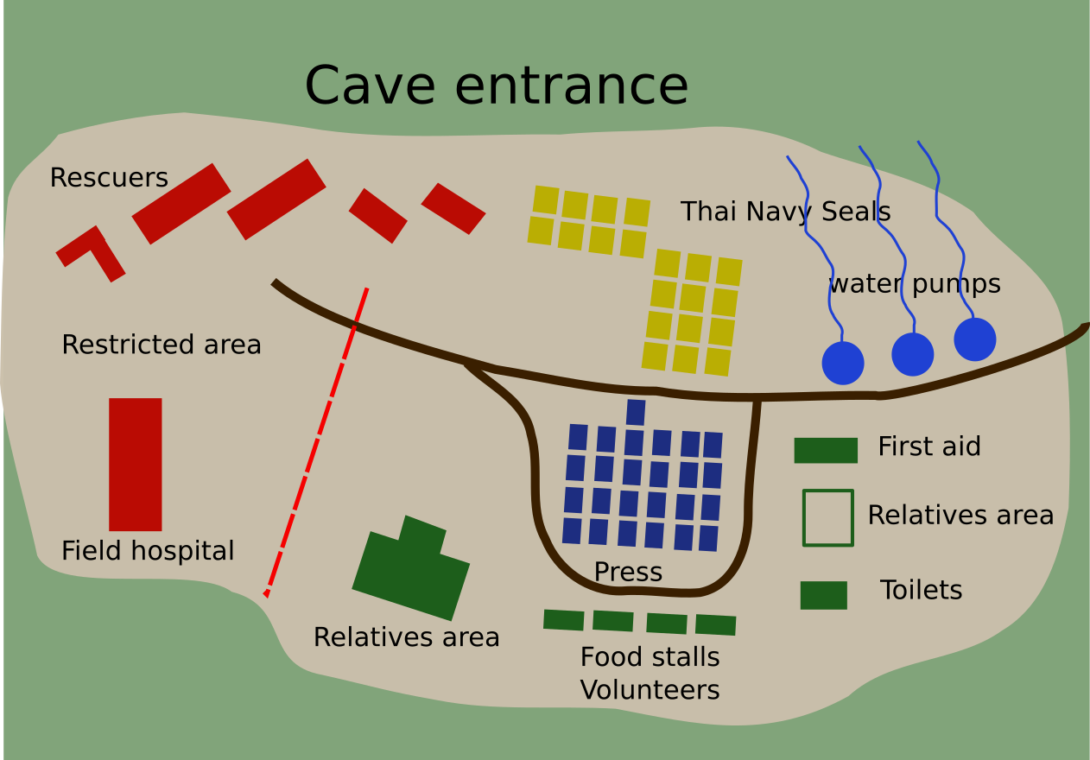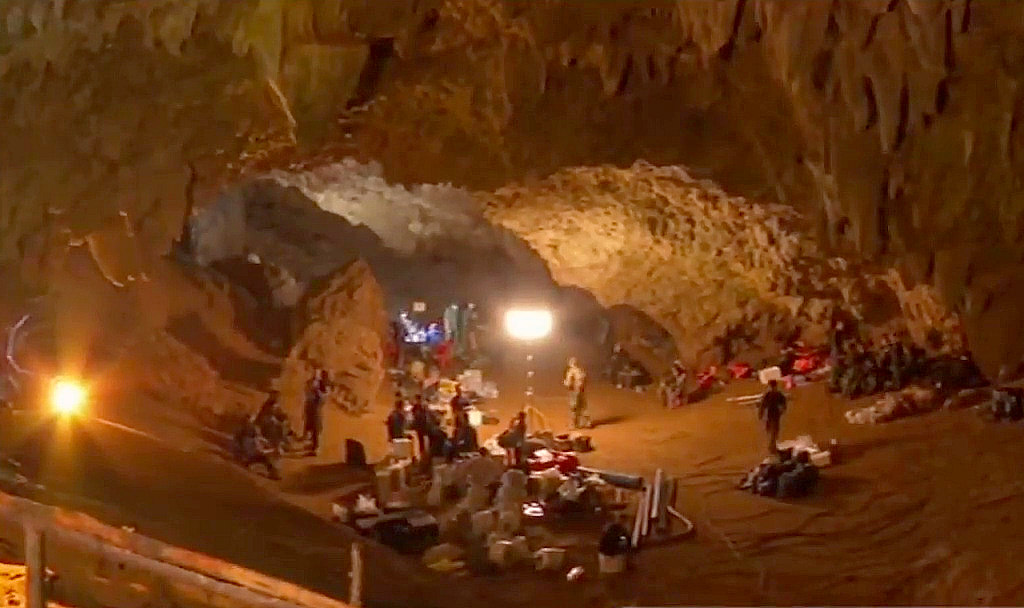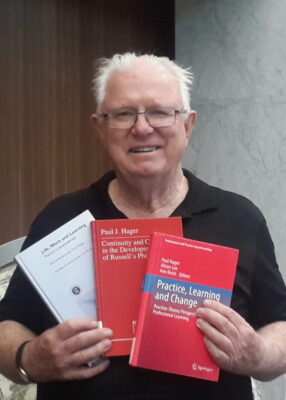Currently, education systems overwhelmingly convey the powerful message that learning is essentially an individual phenomenon. Teaching, assessment and certification practices almost invariably centre on learners as individuals. Compulsory formal education (that is, schooling up to mid-adolescence) promotes the near-universal ‘common sense’ but unquestioned assumption that learning resides in individuals. This assumption follows through into vocational and university education. Perhaps because most philosophers of education have close ties to formal education systems, even the more philosophically inclined literature on learning is characterised typically by the assumption that learning resides in individuals. This situation underpins a further, rarely questioned assumption: that whenever a group of individuals learns, this group learning is nothing more than the sum of learning acquired by the members of the group. This latter assumption is not only false – it also directly hinders understanding of how group participation is a powerful means of generating, sharing and applying knowledge for the benefit of social groups and communities, indeed, for the ‘common good.’ Yet such group learning is a major feature of the crucial widespread learning processes that take place outside of formal education systems by which humans ‘learn to become’ an adult, a worker and a citizen.
While there is no doubting the importance of learning by individuals, this column aims to show that over and beyond that, groups provide daily experiences that stimulate distinctive and valuable learning that is other than the learning by the individual group members. Firstly, some basic principles of complexity theory are introduced briefly. These principles, together with the concept of a ‘co-present group’ (between 2 and about 12 individuals), will serve to identify novel understandings of the largely unnoticed, yet distinctive communal becoming and learning that occurs both within groups and from the mutual interactions between various groups. Finally, this column will demonstrate the explanatory value of these conceptual tools by analysing a major international event in which group learning was absolutely crucial to the attainment of satisfactory outcomes. This was the dramatic 2018 Thai cave rescue of a trapped football team, a very localised experience, but one that has reconfigured future cave rescues world-wide. (The arguments presented in this column receive fuller elaboration in recent publications by Hager and Beckett: 2019 and 2020).
Complexity Theory and Co-Present Groups
Complexity theory is key to appreciating the hitherto unrecognised power of group learning. Complexity theory describes the workings of complex systems. Many familiar systems are simple rather than complex. The states of simple systems can be specified readily and their operations described in linear terms using Newton’s Laws. This is so even if the simple system is very intricate or complicated, e.g., a state-of-the-art submarine or a Boeing 747. Genuinely complex systems are something very different. They elude understanding and description via linear mathematics and Newton’s Laws. In a complex system, the causal categories become intertwined in ways that cannot be adequately described in the dualistic language of state plus laws of dynamics. Put more simply, a complex system is a set of inter-related elements in which the whole is greater than the sum of its parts.
The crucial feature of complex systems is that their complexity arises from the relations between entities, rather than from the entities themselves. In contrast to simple systems, complex systems are characterised by multiple non-linear relations between the entities within the system. It is the interaction of these non-linear relations that can give rise to new structures or qualities which, though constrained by the original relations of the system, are not wholly predictable from them, nor reducible to them. This phenomenon, known as emergence, is a characteristic feature of complex systems. Thus, any understanding of complexity must include a careful investigation of the relations (interrelationships) between entities, rather than just the traditional focus on the entities themselves, i.e., the relata. However, this does not mean that the entities (or relata) are irrelevant. What complexity thinking insists is that it is the processes of the relations between the relata that are Hence, for complex systems, structure is not a mere assemblage of entities. Rather, it is emergent from these processes of the relations between entities.
There are two kinds of complexity: restricted complexity and general complexity. Restricted complexity applies to complex systems that involve a collection of relatively simple components interacting in relatively simple ways to produce diverse possible, even novel, emergent outcomes, e.g., sand dune formation, bird murmuration patterns. However, when complex systems include humans, restricted complexity is applicable only if the people involved are treated as interchangeable variables rather than as distinctive individuals, e.g., traffic flows, voting behaviour. Tracking the current COVID-19 pandemic involves models based on restricted complexity. Different models involve different assumptions about the processes of the complex system that is the pandemic. Similarly, economic forecasters are currently divided about the eventual economic impact of the pandemic, again reflecting different assumptions about the ongoing processes of this very complex system.
General complexity, on the other hand, goes well beyond rule-based interactions between simple components of a complex system. It deals with cases where the agency of the unique individual humans that are part of complex systems, together with the causal powers of their social interactions, ensure that novel, even unpredictable, outcomes are likely to emerge from the processes of these complex systems. Groups of people working jointly on projects of all kinds are examples of complex systems that commonly achieve novel, even unpredictable, outcomes. That is, as well as the valuable learning that individual group members may experience, the group as a whole also learns. Such learning groups are ‘co-present groups.
Widely unrecognised key features of this novel learning that emerges from group activities
- Such learning is distributed across the group
This means that no individual group member can fully comprehend everything that emerges from the group’s interactive processes.
- Such learning emerges from the group’s activities themselves
It is not ‘applied’ from outside.
- This emergent learning cannot be specified in advance
Thus, group learning is often genuinely novel, creative and innovative. It is also inclusive, contextualised, and participatory.
- Such learning is typically beyond any individual’s learning
So groups can achieve learning that is beyond any individual acting alone.
- Nor is such emergent learning restricted to just a particular group
This is so because interactions between groups, and also between individual members of particular groups participating in yet other, often overlapping, groups, are both very powerful mechanisms by which further creative and innovative learning can and does emerge.
The Wild Boars Rescue as an Exemplar of How Complexity Thinking Offers Novel Understandings of Group Learning
In 2018, world attention was transfixed for several weeks on the search for and subsequent rescue of the Wild Boars football team trapped by rising floodwaters in a northern Thailand cave complex. The bravery and resilience of their rescuers, including an international group of expert cave divers, was justly applauded, particularly as the eventual happy outcome had been widely regarded as near impossible. This successful rescue provides a vivid example of an unprecedented outcome emerging from the interactive, coordinated efforts of a series of small co-present groups. Various detailed accounts of the eighteen-day rescue operation are readily available. The following, necessarily brief, account focuses on matters that are particularly relevant to the main concern of this column, i.e., to better understand the crucial group learning that emerges from the productive interactions of co-present groups as they work to achieve a common purpose.

Kicior99, Thai Cave, CC BY-SA 4.0 <https://creativecommons.org/licenses/by-sa/4.0>, via Wikimedia Commons
Where and how the team was trapped
The twelve boys and their coach were trapped in ‘chamber 9,’ located 2.5 km from the cave entrance and about 1 km below the entrance to the cave complex. Of this 2.5 km, several sections (totaling about 1 km) were fully underwater in conditions of nearly no visibility and with many rocky, narrow ‘wriggles’ to be traversed. Initially, the fate of the boys and their coach was unknown. For the first three days, the Thais had mounted a rescue effort. The Thai Navy SEALs were experienced divers, but not experienced cave divers. Hazardous underwater conditions and the sheer force of the rising floodwater halted their progress at a T-junction some distance inside the cave complex. International cave diving expertise was urgently co-opted. This expertise resulted in first contact with the trapped football team on day nine of the search operation. Fortunately, all the boys and the coach were alive, in reasonable health, though very cold and hungry. Groups of divers soon brought food, warm clothing, medical attention/supplies and oxygen (the air within the cave was steadily diminishing). However, the difficult major problem remained: how to rescue the football team whose members were non-swimmers with no diving experience, let alone any cave diving experience?
Challenges/dangers of cave diving in this situation
Vital for successful cave diving is control of the panic reflex, which is a natural reaction to unexpected, life-threatening situations. Cave divers engage in slow, methodical pre-visualisation of possible dangerous situations. They train exhaustively to avoid panic in such situations. Part of this self-control is maintaining a low heart rate while diving. As well, control of the emotions is crucial for logical decision-making. Also vital for cave diving is the continual proper operation of the breathing equipment, such as the facemask, mouthpiece and airways. In a panic situation, it easy for any of these to be dislodged, thereby resulting in drowning since there is no available air-water interface. The very strong current flows through narrow openings with little or no visibility in the Wild Boars entrapment situation only exacerbated these dangers. The underwater death of an experienced Thai Navy SEAL, only days before the actual rescue, served to underline these perilous circumstances.
Various other rescue plans were tried and either failed or proved to be impractical
These included:
- Finding or creating a cave entrance/exit higher up the mountain.
- Pumping the water from the cave complex to enable a safe rescue.
- Following contact being made, pumping oxygen into ‘chamber 9’ via a cable until the floodwaters receded sufficiently to allow a ‘dry’ rescue.
- Postponing the rescue till the wet season was over.
The final rescue plan
Eventually, as the rescue operation unfolded over the several weeks, the final plan became the only viable option, albeit one with an extremely low chance of complete success. This final plan emerged from a lengthy process in which the many challenges and issues that it entailed were progressively taken into account. Its ongoing refinement drew upon the diverse expertise of many different contributors, including the expanding number of internationally renowned cave divers who were being progressively co-opted into the rescue operation. These included Richard Harris, a veteran Australian cave diver, whose expertise as an anesthetist became a lynchpin of the rescue operation.
The ultimate rescues were accomplished by an 18-member group of rescue divers (5 of them Thai Navy SEALS, the other 13 being international cave divers). Harris sedated the boys and coach in turn as their time for rescue approached. Their arms and legs were then bound. They were told that they would wake up to their family greeting them. This ‘packaging’ of the team members also protected the rescuers as they made their cautious progress through various flooded, narrow, rocky spaces on their precarious journey. The 18 divers formed into sub-groups responsible for different segments of the journey, typically ‘one boy per diver’ when underwater, with other divers acting as stretcher-bearers across the drier segments, with each rescue journey totaling about three hours.
Though the expert divers were clearly the crux of the rescue effort, they were but part of a much larger group that contributed to achieving the best possible outcome. This very large group involved hundreds of volunteers working cooperatively with diverse official rescue personnel providing behind-the-scenes support to the overall rescue. It included, for instance, personnel testing the feasibility of possible alternative rescue plans; medical personnel ready to treat the team members as they were rescued; military support personnel; specialised equipment technicians; political liaison staff; diverse media representatives; and cooks and kitchen hands (food was provided gratis by multiple donors).
The Wild Boars rescue provides vivid instances of each of the five key features of the often-overlooked novel learning that emerges from group activities
- Such learning is distributed across the group
The Wild Boars rescue involved multiple instances of significant learning emerging from group activities. Some of it was distributed across the large and diverse group that functioned effectively to carry out the ultimate rescue. Other crucial instances of such emergent learning occurred across the multiple sub-groups that performed various specialised aspects of the rescue effort. A clear example of large group emergent learning was the innovative and successful rescue plan. It progressively emerged from the continual interactions of many and diverse co-present groups.
Examples of emergent learning within specialised sub-groups included the rehearsals of rescue roles, e.g., testing equipment on volunteer children, practising swimming underwater with volunteer non-swimmer children. Likewise, various sub-groups practised effective coordination of their activities with those of other relevant sub-groups within the rescue operation sequence.
The distribution of this kind of emergent learning across the group or sub-group means that no individual group member can fully comprehend everything that emerges from the group’s interactive processes. Each group member’s own experiences and perspectives significantly shape what they understand, and take, from group interactions.
- Such learning emerges from the group’s activities themselves
The Wild Boars cave rescue was a paradigm example of emergent learning as it set a new international benchmark for cave rescues by greatly exceeding what experienced experts had thought was possible. Of course, the rescue also involved the application of established knowledge, such as judging the appropriate amount of anaesthetic for each particular football team member. However, it was the overall joint efforts of the various sub-groups and their mutual interactions that resulted in vital new knowledge emerging.
Nor was the successful rescue merely an application of the final plan. Unplanned contingencies inevitably arose, requiring critical, ‘hot action’ adjustments. One instance was a diver and ‘packaged’ boy setting off too soon on the journey – causing an underwater traffic jam in one chamber. Another instance involved a cave diver with ‘packaged’ boy temporarily losing the guideline in an underwater section in conditions of zero visibility. Help from another diver was needed to recover the situation.
- This emergent learning cannot be specified in advance
The general view amongst the realistic, experienced cave divers was that the loss of at least some boys’ lives was almost certain, given the extreme underwater conditions in parts of the cave complex. Thus, the new cave rescue knowledge that emerged was both surprising and unexpected. Equally, when the lessons of the Wild Boars rescue are drawn upon for future cave rescues, they will need to be adapted to the contextual and logistical features of the locations in which such rescues are taking place.
- Such learning is typically beyond any individual’s learning
Though it is very likely that every individual member of the large and diverse group that carried out the ultimate rescue would have experienced some significant personal learning, the sum of this learning does not exhaust the learning that the rescue effort engendered. Crucial also was the group and sub-group learning that was generated through the practical judgements arising from interactive shared deliberations on how best to achieve each group’s purpose. Individual group members can only partially comprehend the totality of this learning. Thus, the eighteen individual cave divers would each have their own particular and limited perspectives of the fine details of the total process of the rescue.
- Nor is such emergent learning restricted to just a particular group
It can also arise from interactions between groups, as well as between individual members of groups participating in yet other, often overlapping, groups.
Examples of key interactions between sub-groups included the careful rehearsing of how the various sub-groups would operate in the actual rescue to smoothly coordinate their respective functions. Another crucial example is the judgements that emerged from various group interactions, in the days leading up to first contact with the trapped football team, that resulted in (what proved to be) the vital participation of noted Australian cave divers Harris and Challen.
In summary, the Wild Boars rescue is an archetypical example of the productive working of a very large group, comprised of numerous sub-groups, all committed to attaining a shared outcome. From the many interactions both within and between the various groups emerged the reasoning and practical judgements that ultimately created a novel successful solution to the problem. For the boys and their coach, it was literally a case of emergence in the most desired sense.
General complexity enables us to see that the generation of new knowledge and understanding is not solely down to the contributions of brilliant individuals. As the Wild Boars case study has illustrated, purposeful powerful knowledge canemerge from daily interactions amongst small groups and mushroom up to an outcome which may be the ‘new normal’ of, in this instance, cave rescues. Human activities are replete with instances of small groups working to achieve a common purpose. Such groups typically exemplify the five key features of novel group learning outlined above. Such groups seek, through complex interactivity, vital novel and emergent responses to human challenges. The time has come for philosophers of education to recognise this distinctive learning potential that resides in groups.
More generally, the arguments of this column suggest that it would be timely for philosophers of education to pay more serious attention to the multi-faceted nature of the intangible, abstract phenomenon that is learning. For instance, what is the significance of the fact that we seem to be unable to talk coherently about learning without resorting to metaphors?



